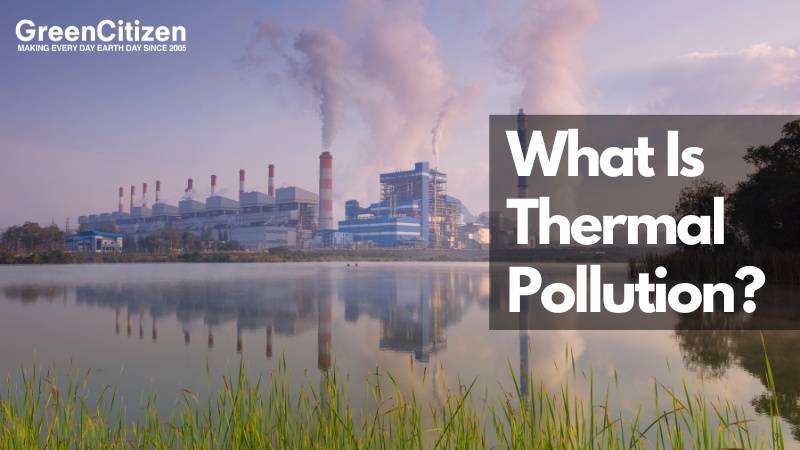Thermal pollution happens when industries, like power plants, dump hot water into natural water bodies, raising temperatures and causing water pollution.
Basically, the process of lowering water quality by changing the normal water temperatures is called thermal pollution.
This disrupts aquatic ecosystems by changing water quality and stressing creatures that need stable conditions. Knowing what thermal pollution is and its effects helps us see how our actions impact water pollution and the environment.
In this blog, we’ll explore thermal pollution, its causes and consequences, real-world examples, and ways to protect water quality and our delicate aquatic ecosystems.
Understanding Thermal Pollution: A Closer Look
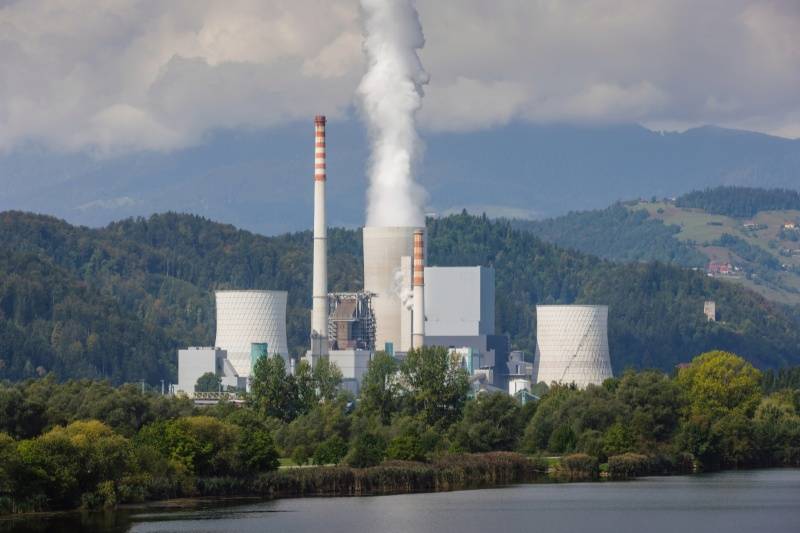
Thermal pollution refers to the unnatural increase in the temperature of water bodies due to human activities. Scientifically, thermal pollution occurs when industries like power plants or nuclear power plants use water to cool machinery and then discharge the heated water back into rivers, lakes, or oceans.
This process causes a rise in water temperature beyond the natural ambient temperature, affecting water quality and disturbing aquatic ecosystems.
Unlike chemical pollution, thermal pollution doesn’t add toxins but changes the water’s temperature. Elevated temperatures lower dissolved oxygen levels, making it hard for aquatic life to survive. It’s like turning up the heat in their home – not ideal for their comfort!
Thermal pollution can severely impact aquatic ecosystems. It can mess with breeding cycles, lower biodiversity, and break the food chain. Maintaining stable water temperatures is vital because even minor changes can cause big ecological problems.
Understanding thermal pollution emphasizes the need to regulate industrial practices to protect our water bodies and keep aquatic ecosystems balanced and healthy.
What Are The Causes of Thermal Pollution?
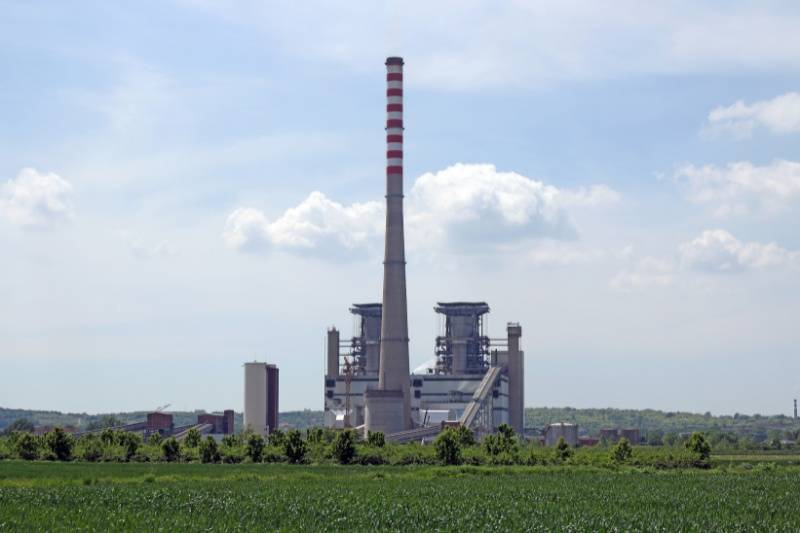
Industrial and Power Plants
Thermal pollution mainly stems from industrial plants, especially power plants. Facilities like nuclear and coal-fired power plants use vast amounts of water to cool machinery and processes.
In the United States, power plants generate about 75 to 80 percent of thermal pollution. The rest comes from industrial sources like refineries, paper mills, chemical plants, and steel mills.
One major contributor to thermal pollution is once-through cooling (OTC) systems.
These systems aren’t very effective at reducing water temperature. A large power plant using OTC can withdraw up to 500 million gallons of water daily, returning it up to 10°C warmer.
For example, the Potrero Generating Station in San Francisco, before closing in 2011, discharged water into the bay about 20°F (10°C) above the natural temperature.
As of 2014, over 1,200 facilities in the U.S. used OTC systems.
After absorbing heat from waste, this water is often released back as heated wastewater, causing thermal pollution. When this heated wastewater enters rivers, lakes, or oceans, it raises the ambient water temperature.
Elevated temperatures can disrupt aquatic ecosystems, harming fish and other organisms. Elevated water temperatures can also harm aquatic plants, promoting algae blooms that threaten their health and biodiversity.
With multiple industrial plants doing this, the problem worsens, significantly raising water temperatures across large areas and putting even more stress on the local environment.
Natural Factors
While human actions are the primary causes of thermal pollution, natural factors also play a role. For example, underwater thermal vents release warm water from the Earth’s crust into oceans. Although this is a natural geothermal activity, it can still locally increase water temperatures, affecting nearby aquatic life.
Unlike the widespread impact of industrial sources, natural warming usually affects only specific areas. However, it still contributes to thermal pollution by creating warm zones that disrupt local ecosystems.
When human activities and natural warming occur together, they can intensify thermal pollution, placing additional stress on aquatic ecosystems.
Agricultural Runoff
Agricultural runoff is another key player in thermal pollution. Water used in irrigation absorbs heat from sunlight and soil, becoming warmer before it returns to natural water bodies. This warm runoff raises water temperatures, especially with nutrients promoting harmful algal blooms. These blooms can further damage water quality and aquatic life.
Additionally, runoff often carries sediments that absorb more sunlight, causing even more warming. In areas with heavy farming, large volumes of warm water frequently enter rivers and lakes, altering their natural state and creating a domino effect that negatively impacts aquatic ecosystems.
Urban Runoff
Urban runoff significantly raises water temperatures, contributing to thermal pollution in cities. Surfaces like roads, pavements, and rooftops absorb heat, warming rainwater as it flows over them. This heated water, often channeled into storm drains, ends up in natural water bodies, raising their temperatures.
The impact is most noticeable after heavy rains, which lead to sudden surges of warm water in rivers and lakes.
Urban runoff can also carry additional waste heat from sources like vehicle emissions and industrial activities, making the situation worse. Unlike gradual heating, urban runoff causes rapid temperature spikes, creating thermal shock conditions that many aquatic species struggle to survive.
Exploring the causes of thermal pollution—such as power plants, natural factors, agricultural runoff, and urban runoff—reveals the blend of human and natural influences at play.
Each source creates distinct challenges for water quality and aquatic ecosystems, highlighting the urgency for effective solutions. To safeguard our water resources, it’s crucial to understand these impacts and take steps to minimize them.
Deforestation
Deforestation contributes significantly to thermal pollution by disrupting the natural temperature regulation of water bodies. Trees and vegetation naturally provide shade to rivers, lakes, and streams, keeping water temperatures cooler.
When trees are removed, these natural shades disappear, exposing water bodies to direct sunlight. This exposure can cause water temperatures to rise as the sun’s heat directly warms the water.
Without the cooling effect of tree cover, water bodies are at a higher risk of thermal pollution, especially in areas where large-scale deforestation has occurred for agriculture, urban development, or logging.
Additionally, losing trees affects how rainwater is absorbed and filtered. Without forest cover, rainwater flows directly into water bodies, often warmer and carrying more sediments and pollutants.
This warm runoff, combined with increased sunlight, raises water temperatures and reduces water quality. This accelerated thermal pollution disrupts aquatic ecosystems by altering habitats for fish and other organisms.
Deforestation, therefore, drives thermal pollution both directly and indirectly, highlighting the need to preserve natural vegetation to maintain stable water temperatures and protect aquatic environments.
Analyzing The Effects of Thermal Pollution
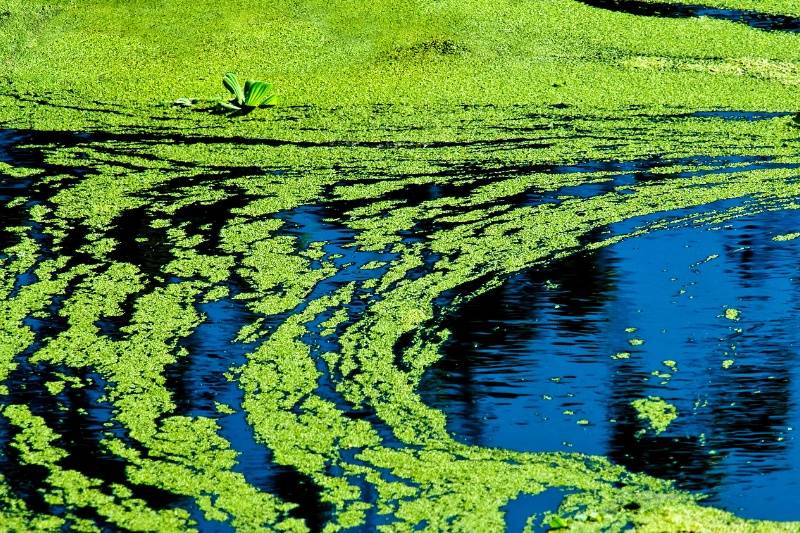
Impact on Aquatic Organisms
Thermal pollution has serious effects on aquatic life, mainly due to higher water temperatures. When water heats up, it throws off the delicate balance that aquatic organisms need to survive.
Warmer water speeds up their metabolism, leading to higher energy demands. If these organisms can’t find enough food to meet this demand, they may suffer from slower growth, weaker immune systems, and lower reproduction rates.
In some cases, they may need to migrate to cooler waters, causing overcrowding and increased competition. Elevated temperatures can also mess with breeding cycles, reducing biodiversity and disrupting the food web. The ripple effects of these changes can be devastating for aquatic ecosystems, affecting both marine life and plants that are crucial to the environment.
Reduction in Dissolved Oxygen
One of the most harmful effects of thermal pollution is the decrease in dissolved oxygen in water bodies. Warmer water holds less dissolved oxygen, which is vital for the survival of aquatic organisms.
As temperatures rise, oxygen levels drop, making it tough for fish and other marine life to breathe. This can lead to the creation of dead zones—areas with so little oxygen that nothing can live there. Fish and other creatures either suffocate or must flee, leaving behind lifeless stretches of water.
Low oxygen levels also make aquatic animals more vulnerable to diseases and less able to recover from stress or injuries. For species that depend on specific oxygen levels, thermal pollution poses a severe threat to their survival in affected habitats.
Algal Blooms
Thermal pollution often leads to harmful algal blooms, which negatively impact water quality and aquatic life. Warmer water provides the perfect breeding ground for algae, especially when combined with nutrients from agricultural runoff and other pollutants.
These blooms block sunlight from reaching underwater plants, disrupting photosynthesis and cutting down oxygen production. As algae die and decompose, they consume even more oxygen, worsening the reduction of dissolved oxygen levels.
This creates a vicious cycle, further degrading water quality and harming aquatic organisms. Some algal blooms release toxins that can be deadly to both aquatic life and humans, posing additional risks to ecosystems and public health. Moreover, algal blooms can clog fish gills, mess with reproduction, and disrupt the balance of aquatic ecosystems, making them a particularly harmful consequence of thermal pollution.
Examples of Thermal Pollution
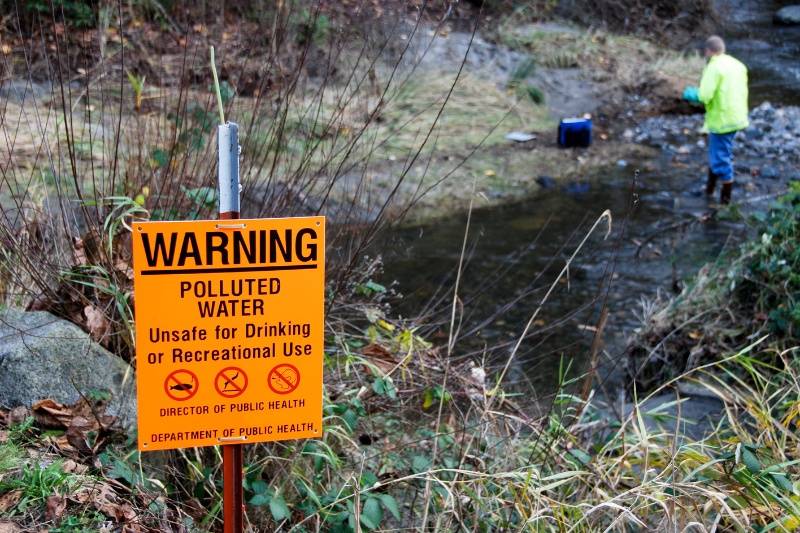
Thermal pollution often comes from unexpected places, especially in urban and suburban areas. On hot summer days, asphalt surfaces can reach 120-150°F (49-65°C). When rainwater flows over these hot surfaces, it heats up significantly before entering nearby waterways.
This heated stormwater raises the temperature of rivers and streams, disrupting aquatic ecosystems. Similarly, rainwater running off dark rooftops warms up and adds to thermal pollution when it flows into natural water bodies.
In places like Haywood County, North Carolina, where cold-water streams are common, thermal pollution can be especially harmful. Streams like Richland Creek, known for their cool, clear waters, provide habitats for species like trout and mayflies, which thrive below 70°F (21°C).
Without shade from streamside trees and shrubs, these waters get direct sunlight, increasing their temperature.
This problem gets worse during droughts when there’s less cool groundwater to balance the warming effects.
During a severe drought a few years ago, the Haywood Waterways Association reported that water temperatures in lower Richland Creek reached 80°F (27°C). This spike was well above the normal range for the region’s cold-water habitats.
These elevated temperatures disrupted the local ecosystem, reducing insect populations, which are a critical food source for trout. With fewer insects, trout face starvation or are forced to migrate to find cooler waters.
This example shows how a single rise in water temperature can have cascading effects on an entire ecosystem.
To combat thermal pollution in areas like Haywood County, several strategies can be effective.
Using stormwater management tools like retention ponds, underground cisterns, and rain barrels allows stormwater to cool before it reaches streams or groundwater.
Planting native trees and shrubs along stream banks provides much-needed shade, reducing direct solar heating and slowing runoff. Simple changes, like diverting downspouts from storm drains to lawns, can also help cool stormwater before it enters water bodies.
These practical steps are crucial for protecting cold-water streams from thermal pollution, helping to preserve these ecosystems for future generations.
Looking At Some Solutions to Reduce Thermal Pollution

Reducing thermal pollution requires a multifaceted approach involving technological innovations, regulatory measures, and community efforts.
Technological Solutions
One of the most effective ways to reduce thermal pollution is by using cooling towers and ponds. Cooling towers help cool machinery in industrial settings by transferring waste heat to the atmosphere instead of releasing it into water bodies.
According to the U.S. Department of Energy, power plants that use cooling towers can reduce thermal discharges by up to 95% compared to once-through cooling systems. Cooling ponds, on the other hand, act as reservoirs where heated water can be stored and cooled naturally before being released back into the environment.
Another promising solution is the shift toward renewable energy sources, such as solar and wind power, which do not require water for cooling and therefore do not contribute to thermal pollution. Transitioning to renewable energy reduces the need for industrial cooling and the associated release of excess heat into water bodies.
Legislative and Regulatory Measures
Legislation plays a crucial role in mitigating thermal pollution. In the United States, the Environmental Protection Agency (EPA) regulates thermal discharges under the Clean Water Act.
The EPA sets standards for cooling water intake structures and requires facilities to use the best available technology to minimize environmental impact.
For instance, stricter guidelines for thermal discharge have led to the adoption of advanced cooling technologies in many industrial facilities. Additionally, the EPA monitors water temperatures in critical habitats to ensure they remain within safe limits for aquatic life. These regulations protect water bodies from excessive heat and maintain ecological balance.
Community and Individual Actions
Communities and individuals can also play a significant role in reducing thermal pollution. Planting native trees and shrubs along stream banks can provide shade and help cool water temperatures.
Using rain barrels and other stormwater management techniques to trap and cool stormwater before it enters water bodies can also be effective.
Simple actions, like diverting downspouts away from storm drains and toward gardens or lawns, allow water to cool naturally before entering streams. Encouraging the use of water-efficient appliances and advocating for sustainable landscaping practices can also help reduce the volume and temperature of runoff entering local water bodies.
By combining technological, regulatory, and community efforts, we can significantly reduce the impact of thermal pollution and protect our aquatic ecosystems.
What Land Promotes Thermal Pollution?

Certain land uses, especially in urban and industrial areas, can significantly increase thermal pollution. Urbanization adds impervious surfaces like roads, parking lots, and rooftops that soak up heat.
When rainwater flows over these hot surfaces, it heats up and is released as warm water into storm drains and then into rivers, lakes, and streams. This release of warmer surface waters raises the temperature of these water bodies, causing thermal pollution.
Industrial plants make this worse by releasing hot water from cooling processes directly into nearby water bodies, disrupting local aquatic ecosystems.
Deforestation and loss of vegetation also play a big role in thermal pollution by removing natural cooling elements. Trees and shrubs provide crucial shade that keeps water temperatures in rivers and streams cooler as they absorb excess heat.
When vegetation is cleared for urban development or farming, water bodies lose this natural shade and get more sunlight, which warms them up.
Without vegetation, there’s also more surface runoff that carries warm water into rivers and lakes, raising water temperature. Both human activities and natural changes in land use contribute to thermal pollution, affecting water quality and harming aquatic life.
What Is Cold Water Pollution?
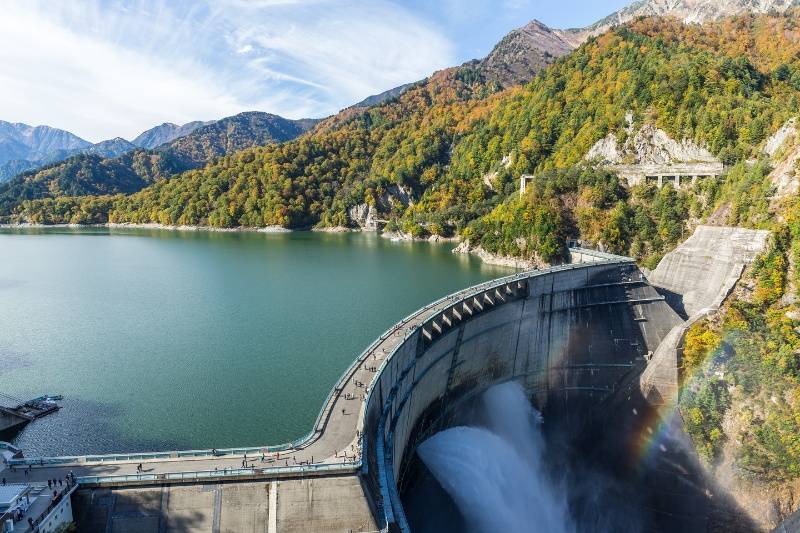
Cold water pollution is a less common type of thermal pollution. It happens when unnaturally cold water is released from storage reservoirs into warmer water bodies, causing a sharp drop in the temperature of the receiving waters.
Unlike typical thermal pollution that raises temperatures, cold water pollution lowers them, disrupting the natural temperature range of aquatic ecosystems.
For example, in Australia, water released from dams for irrigation often comes from deep within the reservoirs, where it stays cooler. This water can be over 18°F (10°C) colder than the water it flows into, which can severely impact aquatic life downstream.
The effects of cold water pollution can be quite damaging. When cold water enters a warmer ecosystem, it can cause thermal shock to fish and other aquatic organisms. This sudden drop in temperature can slow down their metabolism, growth, and reduce their reproductive success, especially for species adapted to a specific temperature range.
Additionally, colder water can lower the body temperature of aquatic animals, making it harder for them to evade predators or find food. In extreme cases, temperatures may drop to lethal levels for some species, leading to reduced biodiversity.
Cold water pollution can impact river systems for hundreds of kilometers, as seen in some Australian rivers.
Careful management of reservoir water releases is essential to prevent cold water pollution. One effective strategy is to mix cooler water with warmer surface water before releasing it, reducing the temperature difference. Alternatively, drawing water from the reservoir’s warmer surface layer can help maintain a more stable temperature range, minimizing harm to aquatic ecosystems.
By adopting these practices, we can protect the balance of aquatic life and preserve the natural temperature conditions crucial for healthy ecosystems.
Final Thoughts
Thermal pollution poses a serious threat to aquatic ecosystems, disrupting the natural balance of water bodies. Whether it’s from industrial plants releasing heated water or urban runoff warming rivers and lakes, the effects can be devastating.
To protect aquatic life, it’s crucial to reduce thermal pollution by implementing better water management practices, like using cooling systems that minimize temperature changes and restoring vegetation along waterways.
By taking these steps, we can help preserve our water bodies and ensure that aquatic ecosystems remain healthy and thriving for future generations.
Let’s act now to reduce thermal pollution and protect our planet’s precious water resources.
